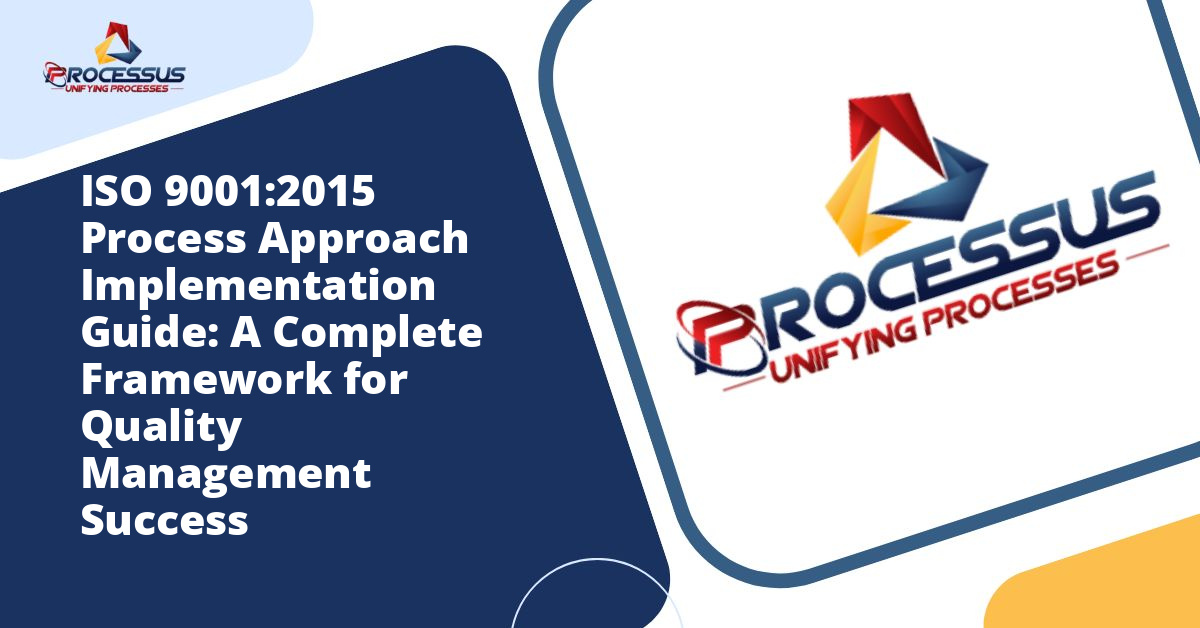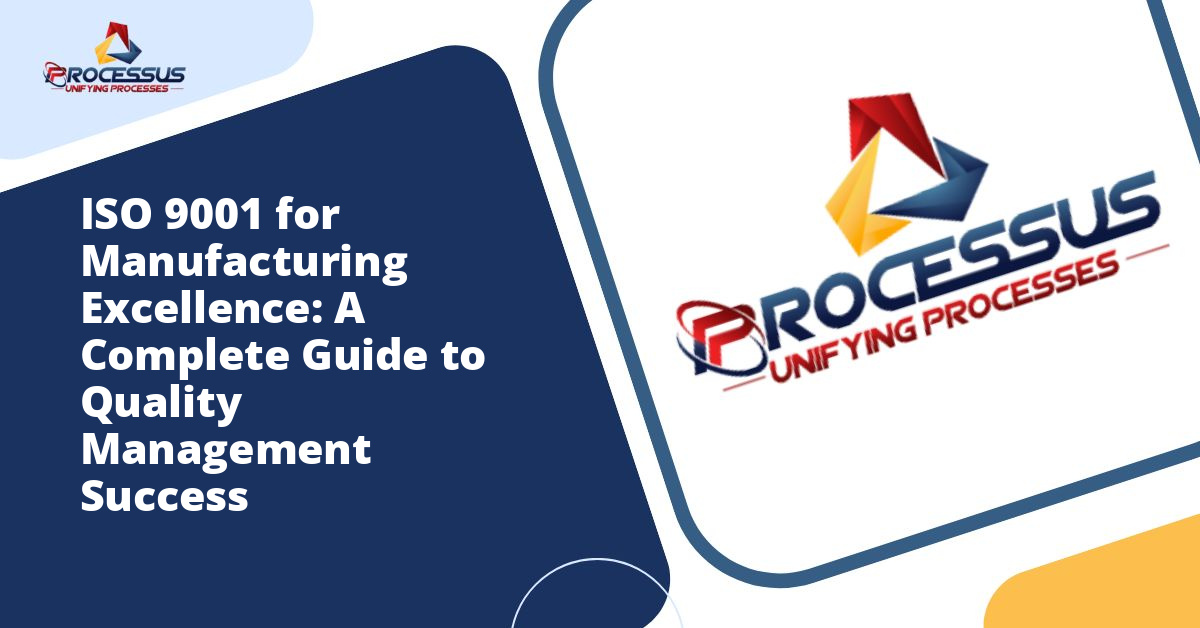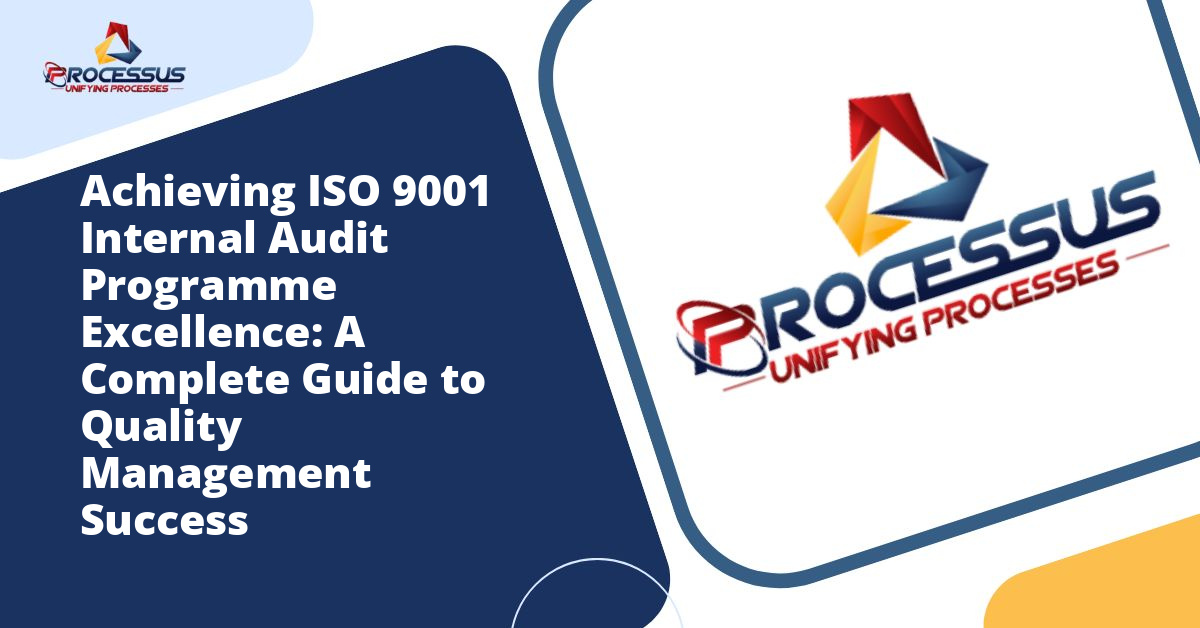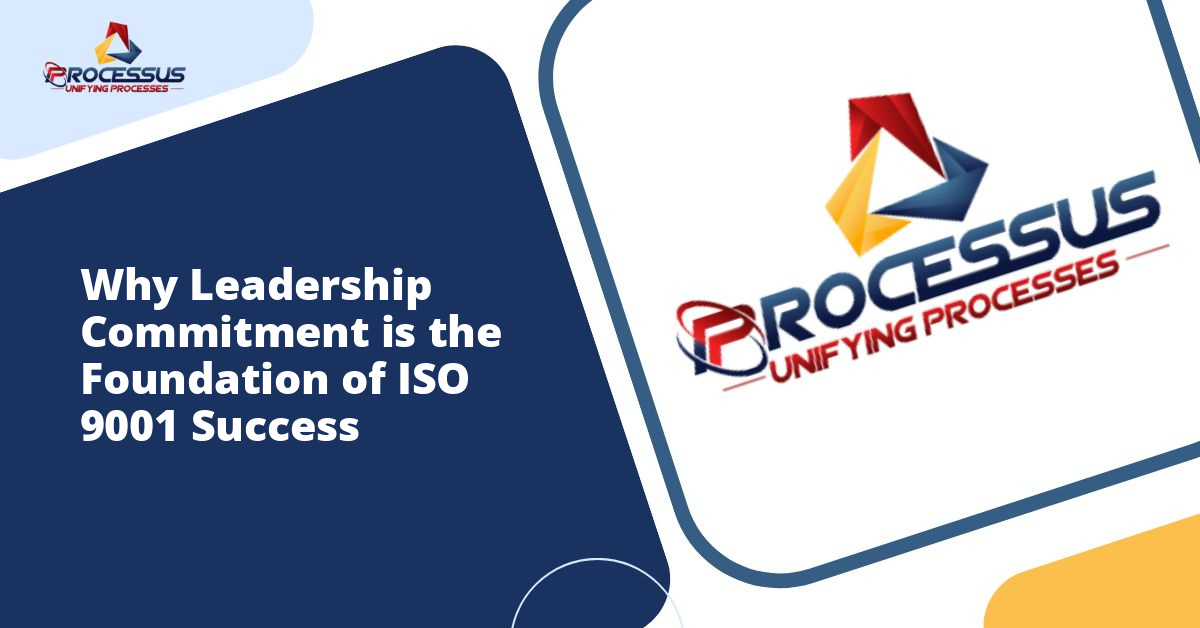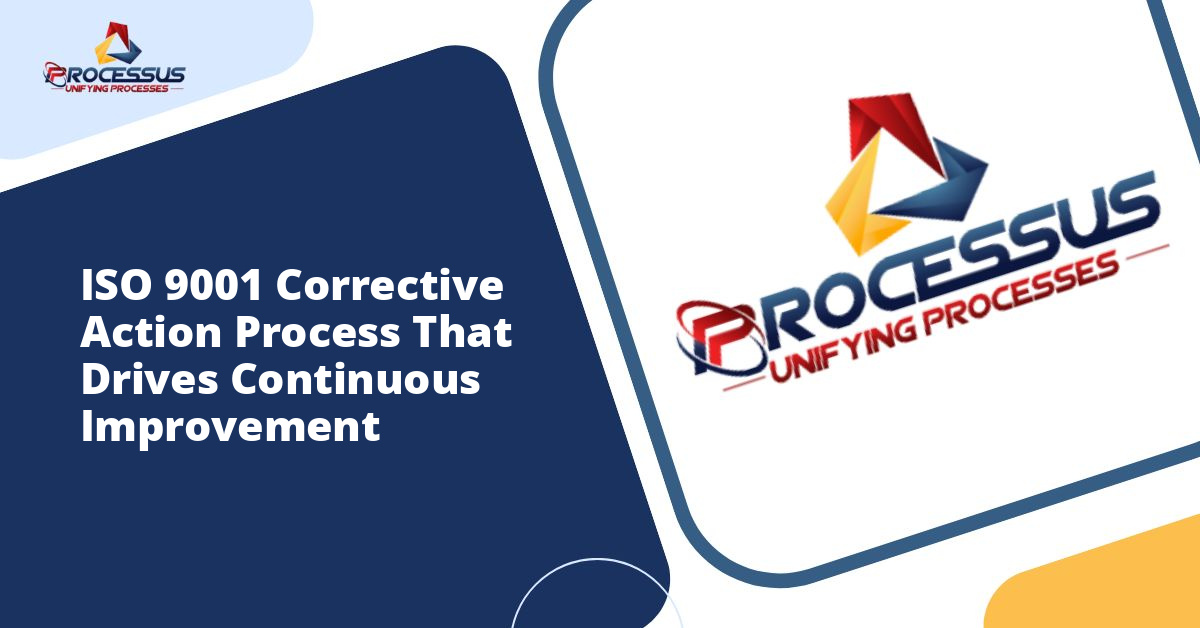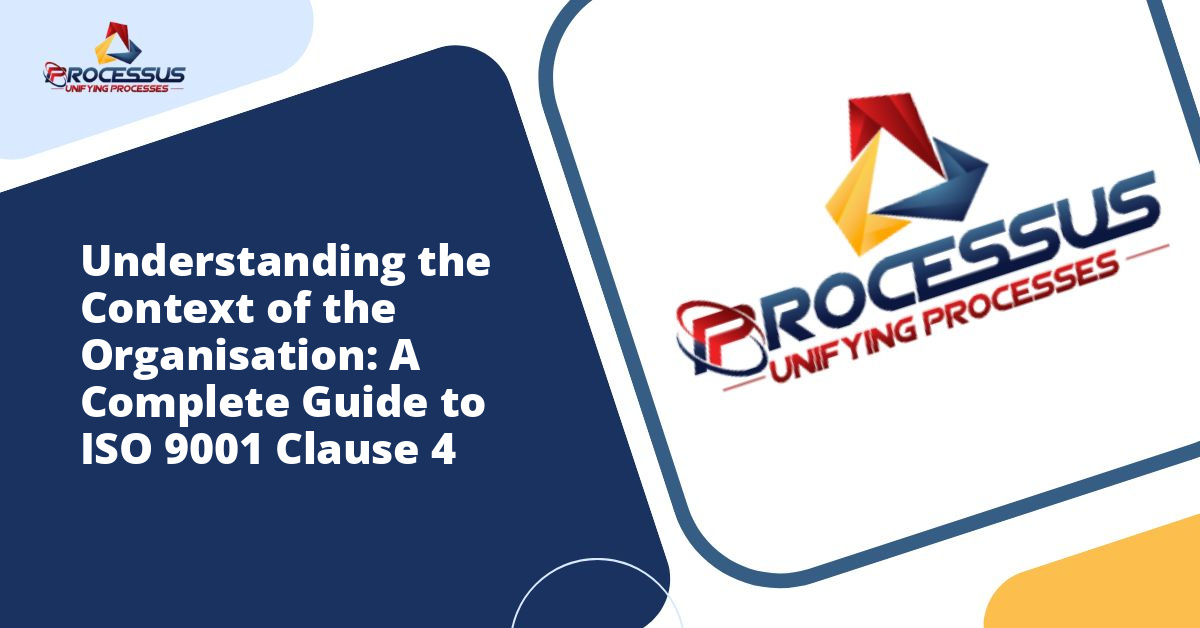Quality management systems have evolved significantly over the past decades, with ISO 9001:2015 representing a major shift toward a process-oriented methodology. Organizations worldwide are discovering that implementing a process approach is not merely about compliance but about creating a sustainable framework for continuous improvement and operational excellence.
This comprehensive guide explores the practical aspects of implementing the ISO 9001:2015 process approach, offering insights that will help your organization transform quality management from a documentation exercise into a strategic business advantage.
Understanding the Process Approach in ISO 9001:2015
The process approach is a management strategy that views organizational activities as interconnected processes rather than isolated functions. This methodology emphasizes understanding how different activities contribute to desired outcomes and how they interact to create value for customers.
At its core, the process approach recognizes that consistent and predictable results are achieved more efficiently when activities and related resources are managed as processes. This perspective differs from traditional functional management by focusing on the flow of work across departmental boundaries rather than within them.
The ISO 9001:2015 standard explicitly requires organizations to adopt a process approach, making it mandatory rather than optional. This requirement reflects decades of quality management evolution and represents best practices from successful organizations worldwide.
Key Principles of the Process Approach
Before diving into implementation, understanding the fundamental principles that underpin the process approach is essential. These principles guide how organizations should think about and structure their quality management systems.
Systematic Definition of Processes
Every organization operates through processes, whether documented or not. The first principle involves identifying, defining, and documenting these processes systematically. This means understanding what activities transform inputs into outputs and how these transformations create value.
Organizations must map both core processes that directly create customer value and support processes that enable core processes to function effectively. This systematic definition provides clarity about how work actually gets done versus how management thinks it gets done.
Understanding Process Interactions
No process operates in isolation. The second principle emphasizes understanding how processes interact, influence each other, and depend on one another. These interactions often cross organizational boundaries, requiring collaboration between departments that traditionally operated independently.
Mapping these interactions reveals critical handoff points where communication breakdowns or delays typically occur. Understanding these connections allows organizations to optimize the entire system rather than suboptimizing individual processes.
Process Management and Control
The third principle focuses on managing and controlling processes to ensure they deliver intended results consistently. This involves establishing clear ownership, defining performance indicators, and implementing monitoring mechanisms that provide real-time visibility into process performance.
Effective process management requires balancing control with flexibility, ensuring processes remain stable while allowing for innovation and improvement.
The PDCA Cycle Integration
ISO 9001:2015 integrates the Plan-Do-Check-Act (PDCA) cycle as the fundamental mechanism for process improvement. This cyclical approach ensures continuous learning and adaptation at both the process and system levels.
Plan Phase
The planning phase involves establishing objectives, identifying risks and opportunities, and determining the resources and methods needed to achieve desired outcomes. For the process approach, this means defining process objectives that align with organizational strategic goals.
Planning should include identifying process inputs, determining what controls are necessary, establishing measurement criteria, and defining how the process will be reviewed and improved. This phase sets the foundation for everything that follows.
Do Phase
Implementation occurs during the Do phase. Organizations execute processes according to established plans, ensuring that documented procedures are followed and resources are deployed as intended. This phase focuses on operational execution while maintaining awareness of process performance.
Documentation during the Do phase captures important information about how processes actually perform in real-world conditions, providing data for later analysis and improvement activities.
Check Phase
The Check phase involves monitoring and measuring processes against objectives, analyzing data, and evaluating performance. This phase transforms raw operational data into actionable information about process effectiveness and efficiency.
Organizations should compare actual results against planned outcomes, identify variations and trends, and determine root causes of any discrepancies. This analysis provides the evidence base for improvement decisions.
Act Phase
Based on insights gained during the Check phase, organizations take action to improve processes. This might involve corrective actions to address nonconformities, preventive actions to eliminate potential problems, or optimization initiatives to enhance performance.
The Act phase closes the improvement cycle and feeds into the next planning phase, creating a continuous loop of learning and enhancement.
Step-by-Step Implementation Framework
Implementing the process approach requires a structured methodology that moves organizations from current state to desired future state. The following framework provides a practical roadmap for this transformation.
Step 1: Establish Leadership Commitment
Successful implementation begins with genuine leadership commitment. Top management must understand the process approach, communicate its importance, and provide necessary resources. This is not about delegating responsibility to a quality manager but about leadership actively championing the transformation.
Leaders should participate in process identification workshops, review process performance data regularly, and visibly support process improvement initiatives. Their engagement signals organizational priority and helps overcome resistance to change.
Step 2: Define the Scope and Context
Organizations must clearly define the scope of their quality management system and understand the context in which they operate. This involves identifying stakeholders, understanding their needs and expectations, and determining which external and internal factors affect the ability to achieve intended outcomes.
Context analysis provides the foundation for determining which processes are necessary for the quality management system and how they should be configured to address organizational realities.
Step 3: Identify Processes
Process identification involves mapping all activities necessary to deliver products and services that meet customer requirements. Organizations should identify management processes that direct the system, operational processes that create value, and support processes that enable operations.
Use cross-functional workshops to identify processes, ensuring representation from different departments and levels. This collaborative approach builds shared understanding and identifies processes that might otherwise be overlooked.
Step 4: Determine Process Sequence and Interaction
Once processes are identified, document how they sequence and interact. Create process maps or flowcharts that show inputs, outputs, and the flow of information and materials between processes.
Pay particular attention to interfaces between processes, as these handoff points often harbor opportunities for improvement. Understanding these interactions reveals the system dynamics that functional perspectives miss.
Step 5: Define Process Criteria and Methods
For each process, establish clear criteria for effective operation and control. Define what success looks like, identify key performance indicators, and determine measurement methods. Criteria should reflect both effectiveness (achieving desired results) and efficiency (optimizing resource use).
Methods include documented procedures, work instructions, and operational controls that ensure processes operate consistently. Balance standardization with the flexibility needed to handle variations in circumstances.
Step 6: Ensure Resource Availability
Identify and provide the resources necessary for process operation and monitoring. Resources include people with appropriate competencies, infrastructure, technology, information, and financial resources.
Resource planning should consider both steady-state operations and improvement initiatives. Inadequate resourcing is among the most common reasons process implementations fail to deliver expected results.
Step 7: Assign Responsibilities and Authorities
Designate process owners with clear authority and accountability for process performance. Process owners should have the authority to make changes within defined parameters and the responsibility to monitor performance and drive improvement.
Define roles for everyone involved in process execution, ensuring clarity about who does what and who makes decisions at critical points.
Step 8: Implement Risk-Based Thinking
ISO 9001:2015 emphasizes risk-based thinking throughout the quality management system. For each process, identify risks that could prevent the process from achieving intended results and opportunities that could enhance performance.
Implement controls proportionate to potential impacts, focusing effort where risks are highest. This targeted approach optimizes resource allocation and prevents over-controlling low-risk activities.
Step 9: Monitor and Measure Process Performance
Establish monitoring and measurement systems that provide timely, accurate data about process performance. Determine what to measure, when to measure, and how to analyze and report results.
Create dashboards or reporting mechanisms that make process performance visible to relevant stakeholders. Transparency drives accountability and enables informed decision-making.
Step 10: Analyze and Improve
Use performance data to identify improvement opportunities. Employ analytical tools such as statistical process control, root cause analysis, and comparative benchmarking to understand performance drivers.
Implement improvements systematically, using project management disciplines to ensure changes are effectively deployed and deliver expected benefits.
Common Challenges and Practical Solutions
Organizations implementing the process approach encounter predictable challenges. Understanding these obstacles and having strategies to address them increases implementation success rates.
Functional Silos
Traditional organizational structures create functional silos that resist cross-functional process thinking. Departments optimize their own performance without considering system-level impacts.
Address this challenge by establishing cross-functional process teams, creating process performance metrics that span departments, and recognizing collaborative achievements. Leadership must model cross-functional collaboration and remove barriers that perpetuate siloed thinking.
Documentation Overload
Some organizations respond to process approach requirements by creating excessive documentation that adds little value. Documentation becomes an end in itself rather than a means to effective process management.
Focus documentation on what adds value. Document to the extent necessary for process operation, training, and improvement. Use visual management tools like flowcharts and process maps rather than lengthy text descriptions whenever possible.
Resistance to Change
People naturally resist changes to familiar ways of working. The process approach often requires significant behavioral and cultural shifts that trigger resistance.
Address resistance through communication, involvement, and demonstrated benefits. Help people understand why change is necessary and how it benefits them. Involve those affected by changes in designing solutions. Celebrate early wins to build momentum.
Lack of Process Thinking
Many managers and employees think functionally rather than in terms of processes. This mindset gap makes process approach concepts difficult to grasp and apply.
Invest in training that builds process thinking capabilities. Use real examples from your organization to make concepts concrete. Provide tools and templates that guide people in applying process approach principles to their work.
Measuring Implementation Success
Organizations need clear indicators that their process approach implementation is succeeding. Several dimensions provide insight into implementation effectiveness.
Process Performance Metrics
Track whether individual processes are meeting established objectives. Improvement in process performance metrics indicates that the process approach is enabling better results.
System-Level Results
Monitor overall quality management system performance, including customer satisfaction, product conformity rates, and operational efficiency. The process approach should drive improvement in these system-level indicators.
Organizational Capability
Assess whether the organization is developing stronger capabilities in process management, problem-solving, and continuous improvement. Growing capability indicates sustainable implementation rather than superficial compliance.
Cultural Indicators
Observe cultural shifts such as increased cross-functional collaboration, greater ownership of results, and more systematic problem-solving. These cultural changes signal deep implementation that will endure.
Sustaining the Process Approach Long-Term
Implementation is not a one-time project but the beginning of an ongoing journey. Sustaining the process approach requires deliberate effort to embed it into organizational DNA.
Integrate process reviews into regular management routines rather than treating them as separate quality activities. Make process performance a standard agenda item in management meetings. This integration signals that process management is core business rather than a compliance burden.
Continuously develop people’s capabilities through training, coaching, and experiential learning. As people rotate through roles or new employees join, ensure they receive appropriate orientation to the process approach and their role within it.
Regularly reassess processes as the organization and its context evolve. Processes that were appropriate yesterday may not serve tomorrow’s needs. Build periodic process reassessment into planning cycles to ensure ongoing relevance.
Celebrate and communicate successes achieved through the process approach. Stories about improvements, problems solved, and customer satisfaction enhanced through process thinking reinforce the value of the methodology and motivate continued commitment.
Conclusion
The ISO 9001:2015 process approach represents a fundamental shift in quality management thinking, moving from compliance-focused documentation to systematic management of how work actually gets done. Organizations that embrace this approach discover benefits extending far beyond certification, including improved operational efficiency, enhanced customer satisfaction, and stronger organizational capability.
Implementation requires commitment, systematic methodology, and persistence through challenges. The framework provided in this guide offers a practical roadmap, but each organization must adapt it to their unique circumstances, culture, and context.
Success comes not from perfect initial implementation but from commitment to continuous improvement. Start with manageable scope, learn from experience, and progressively expand and deepen your process approach. Over time, process thinking becomes embedded in organizational culture, driving performance improvement that creates lasting competitive advantage.
The journey may be challenging, but organizations that successfully implement the process approach find themselves better equipped to navigate complexity, respond to change, and deliver consistent value to customers and stakeholders.

